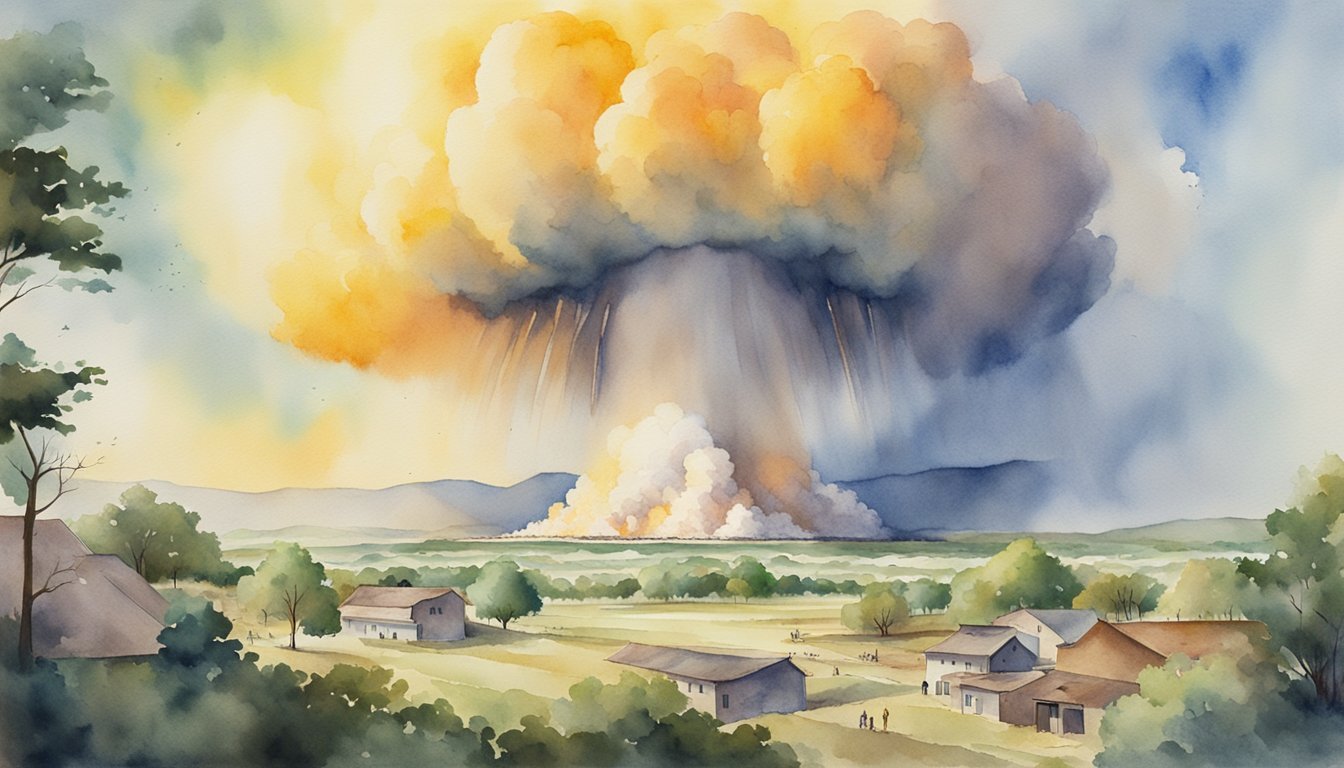Understanding Nuclear Explosions

Nuclear explosions possess immense power and have profound effects. This section examines the key aspects of such detonations: their mechanics, historical occurrences, impact effects, assessment methods, and strategies for prevention and protection.
Mechanics of a Nuclear Blast
A nuclear explosion starts with the release of an immense amount of energy from splitting (fission) or fusing (fusion) atomic nuclei. This energy produces a lethal combination of intense heat, light, and a rapidly expanding shock wave that can obliterate structures and cause significant air pressure changes.
Historical Context and Examples
The atomic bombings of Hiroshima and Nagasaki during World War II were the first and only uses of nuclear weapons in warfare. These incidents, along with nuclear tests during the Cold War, have shaped global nuclear policies and demonstrate the devastating effects of nuclear weapons.
Effects of Nuclear Detonations
The aftermath of a nuclear detonation is characterized by immediate and long-term consequences. The initial blast can cause hundreds of thousands of casualties and destroy buildings within a certain radius. Survivors may suffer from burns, radiation poisoning, and flash blindness. Nuclear fallout leads to radioactive contamination affecting living organisms and ecosystems.
Calculating Potential Impact
Tools such as NUKEMAP allow individuals to model hypothetical nuclear attacks and understand potential blast radius and fallout. Parameters such as the explosive’s yield and the height of burst are factored into these simulations to provide a detailed risk assessment.
Prevention and Protection
Mitigating the threat of nuclear explosions focuses greatly on international diplomacy, disarmament efforts, and securing existing arsenals. For individuals, knowledge of protection strategies and having a plan are vital. Civil defenses include evacuation plans and the construction of shelters designed to withstand initial blasts and prevent radiation exposure.
Cultural and Academic Perspectives

Nuclear weapons have not only altered modern warfare but also deeply influenced culture and academia. From shaping public education to spawning ethical debates, the impact of their immense destructive power, demonstrated in kilotons and megatons, extends far beyond the military sphere.
Representation in Media and Arts
Artists and filmmakers have been captivated by the imagery of nuclear explosions, notably the iconic mushroom cloud, which has become a symbol of power and devastation. In movies and television shows, the horror and fascination surrounding nuclear weapons are frequently explored, reflecting humanity’s complex relationship with these warheads. Alex Wellerstein, a nuclear historian, has developed Nukemap, an interactive tool allowing users to visualize the effects of nuclear explosions on geographic locations, thereby bringing a digital representation of their potential impact to a broader audience.
Public Education on Nuclear Science
Organizations and educational channels like ASAPScience have worked to make information about ionizing radiation and nuclear science accessible to the public. They aim to demystify the workings of nuclear weapons and foster a greater understanding of their effects, including the measurement of their explosive yield in kilotons and megatons. Public education efforts also focus on historical events, such as the bombings of Hiroshima and Nagasaki, to impart lessons from World War II.
Visual Interpretation of Explosions
The representation of nuclear explosions in visual media often emphasizes the blast radius, highlighting the destructive reach of explosions in terms of miles from the epicenter. This focus can be seen in works that superimpose the destructive radii of hypothetical detonations over maps of major cities, driving home the potential scale of devastation. Comparisons are also drawn to TNT equivalents, allowing for a tangible sense of the energy released.
Ethical and Historical Discussions
Academics often engage in discussions about the ethical implications of nuclear development and deployment, topics that have remained at the forefront since the Cold War era between the United States and Russia. Considerations of the human and environmental costs of nuclear warfare are central to these debates, as are reflections on deterrence and disarmament strategies. Books and blogs continue to explore these themes, underscoring the importance of learning from history to shape future policies.

